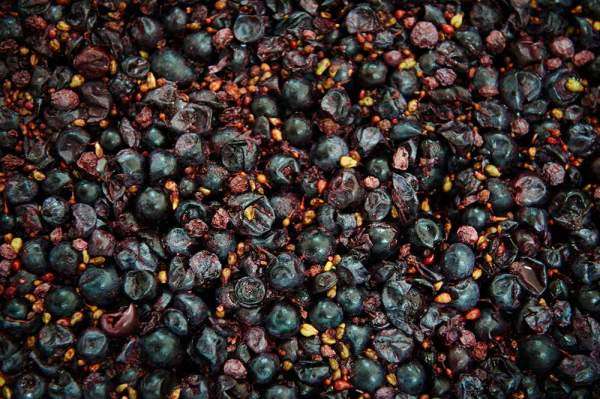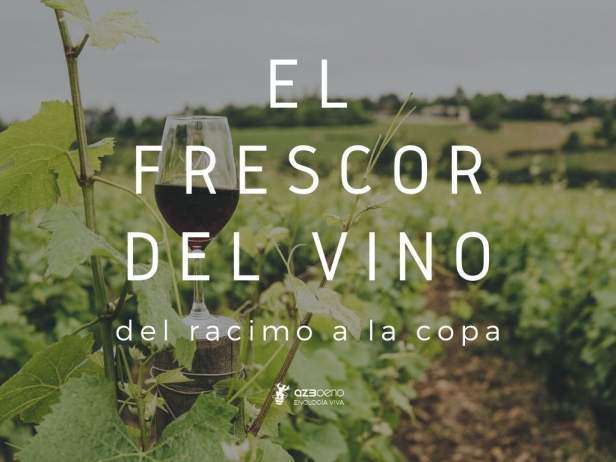
At present, all winemakers are thinking of the production of our wines. Extraction of the best of red grapes, intensity of color, structure, fruit, etc., We want wines with more or less power and concentration, and at the same time with elegance and finesse.
However, to achieve these objectives we must take into account that the phenolic maturity of the grape will determine the tannic style of the future wine, and the vinification methods will determine the T/A ratios. Having grapes with a good phenolic maturity, and perfect knowledge of the process (pumping over, temperature, devatting) will make the wine the most pleasant.
A good balance in the tannin/anthocyanin (T/A) ratio, will help the wine when it comes to aging it. However, the more tannin there is and the lower the quantity of anthocyanins (greater astringency), the lower the wine’s aging power. The relationship may vary depending on the area, variety, etc., but values between 3.5 and 4 are recommended; values above this can increase the wine’s aggressiveness and the fruit can be lost along with the longevity of the wine.
We’ll focus on the role of tannins in this post:
- The tannin and the acidity is involved in the structure of the wine. Tannins are some of the grape’s most significant polyphenols; they are present in the pomace and seeds of the grapes.
- The tannin is involved in the stability of the coloring.. Oxygen is required to achieve a good return from the tannin/anthocyanin reaction. The supply of oxygen in a wine rich in free anthocyanins allows these anthocyanins to be stabilized with the tannins through an ethanol bridge, blocking tannic evolution, since the anthocyanins fixed at the end of the chain block the tannin-tannin polymerization. Anthocyanins always provide a fatty and sweet sensation because they are linked to a glucidic fraction; it is always advisable to extract them all.
- They have antioxidant capacity.
- Tannins, depending on phenolic maturity and origin (skin or seed) modify the perception of bitterness and astringency . Tannins from the pomace have a high level of polymerization and they have a small proportion of epicatechin. However, tannins from the seeds have a lower level of polymerization and a high percentage of epicatechins. It is important to differentiate the composition of each tannin to control its extraction and suitability for the style of wine sought.
- Tannins from the husk that are found in free form are extracted in the aqueous phase, at the beginning of the maceration and above all, by the action of SO2.
- Bound tannins are extracted in the alcoholic phase during fermentation; some even require an enzymatic action for their extraction.
- Seed tannins are extracted in the middle of fermentation, coinciding with the release of potassium due to its high solubility in the alcoholic phase.
In the first moments of the maceration, anthocyanins are extracted but very little tannin, so tannin must also be extracted to find a Tannin/ Anthocyanin (T/A) balance and this is more stable over time, since anthocyanins need tannins so that the color does not precipitate.
The phenolic maturity present will have an influence. An immature grape will have poorly polymerized and very reactive tannins. In this case, the pumping over and the fermentation temperature are two factors that can help us to reduce the extraction. If we want to volatize the plant compounds, it is advisable to ferment at a temperature greater than 25ºC. To help its polymerization, the oxygen tool is essential through micro oxygenation between alcoholic and malolactic. There is also the option of preparing using thermovinification, a technique of heating the substance to 65 ºC for the complete elimination of plant compounds and obtain wines with color and fruit.
In the case of botrytis-altered grapes, oxidative enzymes can act rapidly by oxidizing polyphenols and other compounds. It is important in these cases to block the enzyme with sulfur and with gallic tannin.
In short, depending on the phenolic maturity of the grape and the defined style of wine how much tannin does my wine need?
Related news
THE FRESHNESS OF THE WINE, from the bunch to the glass
The fashion for fresh wines has ceased to be fashion to become a trend; more and more consumers are looking for elegance, length and freshness above all.
More than winemaking machines
The winemaker is the artist who observes the vineyard, interprets it and imagines the wine that could be produced from this plot.
The vineyard, secure stock
One of the virtues of the wine sector is its capacity for self-regeneration and adaptation to overcome the successive crises that history has brought us, each one different, and this is undoubtedly the one which raises the most uncertainties.


